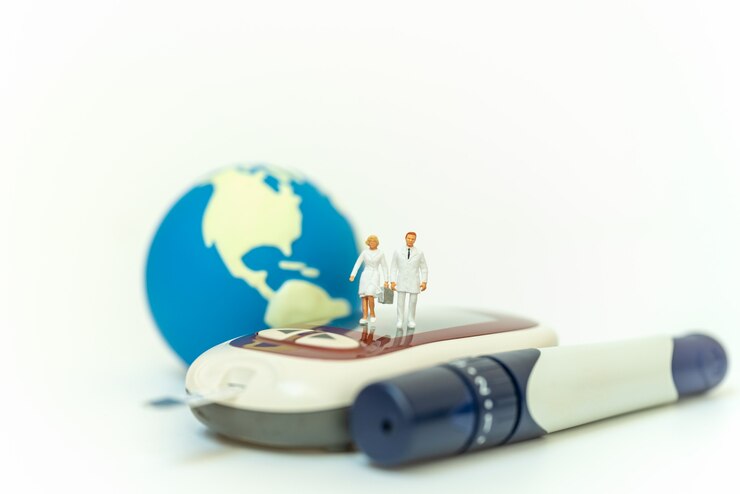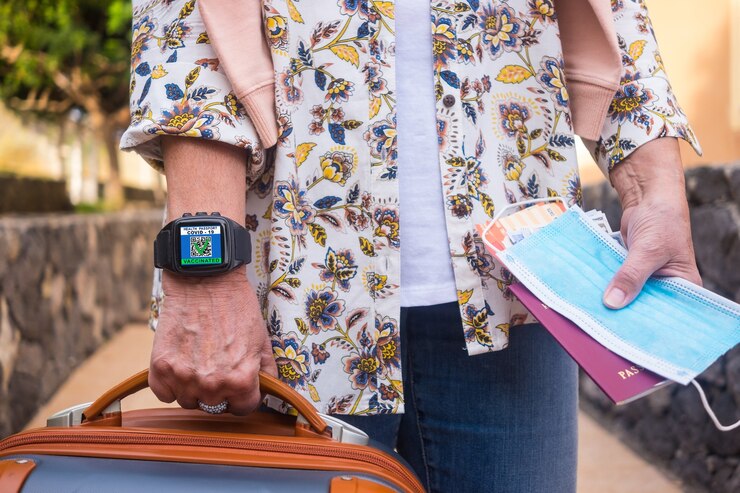Table of contents
- ● Travelling with Diabetes: You May Have to Plan a Bit More!
- ● Essential Steps to Take Before You Leave
- ● Tips for Staying Healthy and Safe on the Go
- ● Eating and Drinking Just Right
- ● What to Do if You Experience a Diabetes-related Crisis
- ● Take-home
- ● FAQs
Travelling with Diabetes: You May Have to Plan a Bit More!
The warm weather and longer days of this time of year make you earn for a much-needed break from work. Multiple long weekends and your kid’s summer break make trip planning simpler. However, if you are a diabetic, you must plan your vacation ahead of time! Pre-travel planning is crucial for a safe journey. Travelers with diabetes who wish to go scuba-diving, trekking, or just chill by the pool need sound advice on travelling with diabetes supplies so that a hectic trip won’t put their health in danger. Here is a quick read on all the dos and don’ts of travelling abroad with diabetes.
Essential Steps to Take Before You Leave
When it comes to diabetes, twice is better. Make sure to add extras of everything to your travelling with diabetes checklist. Here is a short check-list that could come in handy when packing for travelling on a plane with diabetes. Remember that at least half of these should be packed in your hand luggage.
● Plane Insulin: Insulin should be transported in hand luggage since it can freeze when exposed to the low temperatures in the airline cargo. To reduce the risk of losing or misplacing a bag, it is good to divide prescriptions and diabetes supplies with your travel partner.
● The hand luggage should also have blood glucose meters and test strips. Blood test equipment like Lancets and additional glucose test strips, additional glucose meter, additional batteries or a glucose meter charger and alcohol wipes.
● Patients should normally maintain their routine while travelling and make any necessary adjustments as per the time at their destination.
● ID proof, diabetes ID card and prescription from the diabetologist. These are essential for security checks on air travel.
● A well-packed box of low-sugar snacks like fruits (apples, blueberries, pomegranates, etc), crackers or cheese bites, peanut butter, home-made juices and some kind of glucose dose (hard candies or toffees) to treat low blood sugar.
Get a thorough medical exam before your trip to ensure that your diabetes is under control before travel. Other nations may have significantly varied prescription laws. Carrying your own prescriptions for medical emergencies would be a wise decision.
Tips for Staying Healthy and Safe on the Go
People who maintain their sugar levels at home might find it challenging to do so while travelling. Travelling alone causes a rise in stress and hormone imbalances that may have an impact on glucose regulation. In addition, changes in diet, activity, sleep, climate, and stress can make things worse. When diabetes control is ignored while travelling, hospital and medical expenses are greatly increased.
So, here are a few tips to keep in mind to make your travel diabetes-friendly:
● Plan for time zone changes:
If you are travelling east, the travel time shortens. This might require you to take fewer insulin shots. We gain time when going west; an extra shot of insulin may be required. Keep an eye on your home time zone until the morning after you arrive to help you remember shots and meals while switching time zones.
● Record of your blood sugar levels:
Keep a record of your blood sugar levels while travelling. This will help you monitor any changes and make adjustments to your medication and diet as needed.
● Stay hydrated:
Drink plenty of water and other non-sugary beverages to stay hydrated. Avoid consuming too much alcohol and caffeine, which can cause dehydration and affect blood sugar levels.
● Maintain a decent diet:
Bring fruit, nuts, and seeds as snacks to help you stay away from harmful selections when you’re out and about. Avoid missing meals and try to stick to your regular eating schedule.
● Take breaks and stretch:
Travelling long haul with diabetes can cause swollen feet, blood clots, irregular sugar levels, and lethargy due to the tendency for poor blood flow in diabetics. Stretch your legs, especially! Walk for a couple of minutes on a train or plane journey. On road trips stop the car to take breaks.
Eating and Drinking Just Right
Local cuisines are the biggest attractions on a holiday, which can make you go easy on your diabetes management rituals. Diabetics need to be aware of how certain foods can impact sugar levels by strictly following these:
● Food:
Encourage patients to actively monitor how new foods impact their blood sugar levels by measuring their levels before and after each meal. Choosing veggies and sources of protein reduces swings in blood sugar.
● Alcohol:
Alcohol alone can increase blood sugar levels if colas and beverages are added with snacks, but when taken with drugs that lower blood sugar, including sulphonylureas and insulin, the risk of hypoglycemia increases. Patients must check their blood glucose levels and administer the proper hypoglycemia treatment as this could happen over the course of the night or even the following day. Patients should be advised to avoid drinking on an empty stomach and urged to stay hydrated by drinking water and using sugar-free juices along with alcohol.
What to Do if You Experience a Diabetes-related Crisis
As a diabetologist, it is essential to give patients advice on what to do in an emergency. Here’s what you may need to do:
● When travelling on a plane with diabetes the aircraft staff come in handy: at the holiday spot, the hotel personnel will be better prepared to assist with conditions like hypoglycemia.
● Patients should always have snacks on them and supplies to manage hypoglycemia in case there are no accessible alternative foods.
● Learn the phrases “I have diabetes” and “Sugar please” in the language of the nation you intend to visit.
● To hasten help in an emergency, patients should have their cell phones and emergency contacts with them.
● The standard “sick-day” protocols are followed after a diabetic emergency episode, which typically entails boosting fluid intake and performing more regular blood glucose checks.
Take-home
Although it may seem difficult, travelling abroad with diabetes is a cakewalk with the right planning and preparation. You can enjoy your trip without jeopardizing your health by following the above-mentioned advice, which includes travelling with diabetes supplies, keeping track of blood sugar levels, staying hydrated, and maintaining a nutritious diet. Never forget to speak with your doctor before leaving on a trip, and never hesitate to call for help if something goes wrong.
FAQs
● How should I store my insulin while travelling?
Insulin should not be exposed to severe temperatures and should be maintained at room temperature. To keep your insulin safe from heat and cold while travelling, place it in a cooler bag or insulated pouch.
● How can I prevent blood clots while travelling?
To prevent blood clots and other issues when travelling long distances, stop frequently and stretch your legs. Put on compression stockings to increase the blood flow to your legs.
● How can I ensure that I am properly prepared for my trip?
Before making any travel arrangements, speak with your diabetologist to be sure you are adequately prepared. Create a list of all the diabetes supplies you’ll need, study the area hospitals, and make any necessary preparations for prescription changes.








